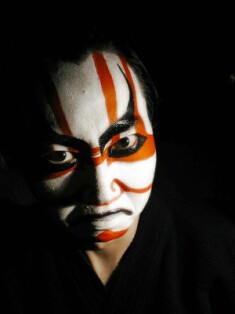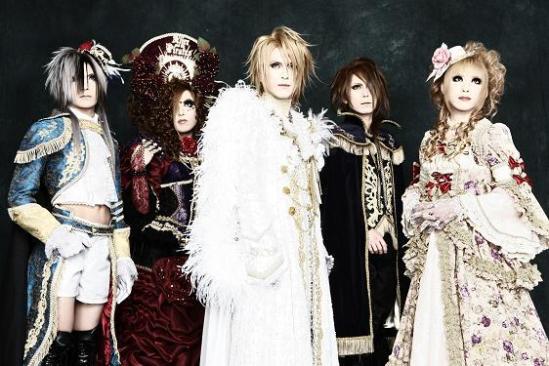More than just a bunch of complicated ideals and aesthetics, however, Visual Kei is a social stage upon which we are all acting out a role we have created for ourselves. It’s not just looks; it’s about playing the part.

Traditional Kabuki makeup
Having discovered Jrock and Visual Kei after already having a basic understanding of traditional Japanese culture, my first thought when I started watching videos of Visual Kei bands was This is Kabuki, if it was put on by a French opera company played out by metal-bands. I was surprised to find that Tiffany Godoy, the author of the photo book Japanese Goth took the same approach. There is no doubt about it: Visual Kei is a descendant of the Noh and Kabuki theaters of traditional Japan. Only instead of acting out a play with a script, the bands are acting out scenes and characters with their costumes, personalities, and music.

Versailles~ Philharmonic Quintet (3rd Gen.)
Each member is using costume, makeup, and personality (whether natural or affected) to play out a particular role, within the band as well as within the music itself. This is perfected in the affected personas of idols such as GACKT (ex-Malice Mizer), who says that he is a Vampire born in the 16th century, and Mana (Moi dix Mois, ex-Malice Mizer) who dresses entirely in Gothic Lolita and refuses to speak, claiming that the only modes of expression he needs are that of his music.

Gackt, Mizerable era (1999)
This “role playing” carries over into the topic covered in the “Manpires” post, where many of the vocalists and frontmen for Visual Kei bands assume a role of a protagonist or hero figure. This “hero” is often depicted as being the ideal man, repeat: like a character out of a historical romance novel. This role-playing and literal acting of the part selected, is part of what creates the allure and attraction around these rockers. They are like a palette onto which you can project whatever ideals you have, and your dreams will never be crushed, nor fulfilled.
